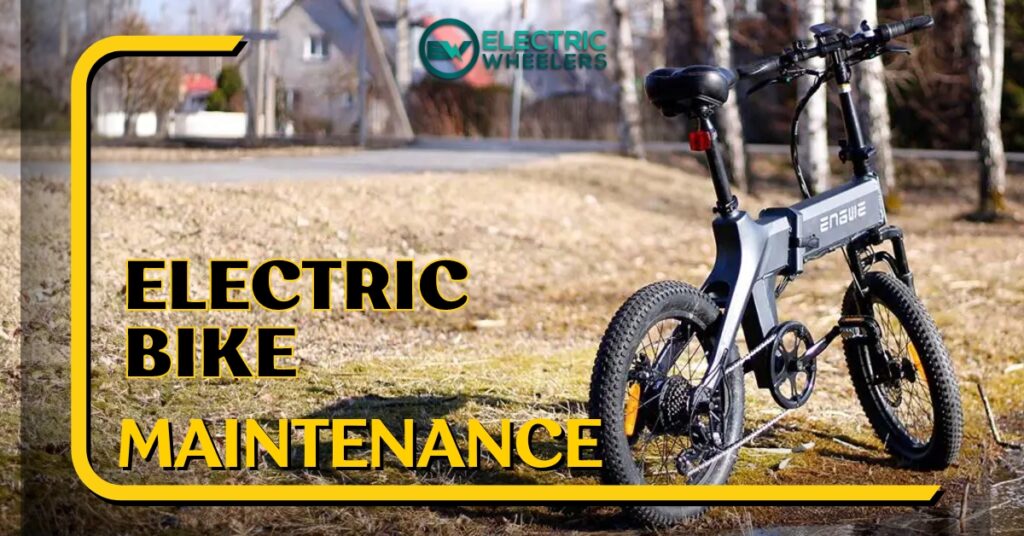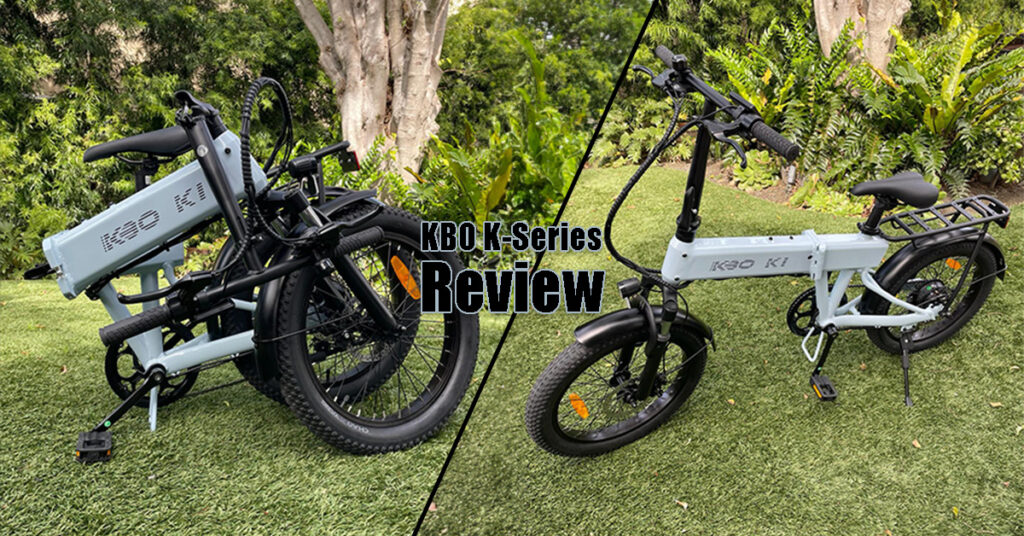Like any piece of advanced machinery, e-bikes come with their own set of maintenance needs.
Understanding the importance of electric bike maintenance is paramount. Just as you wouldn’t neglect the upkeep of a prized sports car, your e-bike deserves regular attention too.
Proper maintenance not only ensures that your e-bike runs smoothly and efficiently but also extends its lifespan, giving you more value for your investment.
The benefits of regular upkeep are manifold:
- It guarantees optimal performance, ensuring that every ride is as exhilarating as the first.
- It also plays a pivotal role in rider safety, reducing the risk of malfunctions or breakdowns during a journey.
- Consistent maintenance can save riders significant amounts in the long run, preventing costly repairs or replacements.
I have had several e-bikes as well as regular bikes and I’ve had quite a bit of exposure to their maintenance. I’m definitely not a repair wizard but I’ll do the basic maintenance by myself. However, there are some things I always have a professional do.
In this article, I’ll delve deep into the world of e-bike maintenance and provide you with expert tips to keep your electric companion in top shape. Also, I will share my insights on what you should do yourself and what not.
- E-Bike Maintenance vs Maintaining a Traditional Bicycle
- Servicing Frequency
- Battery Care: The Heart of Your E-Bike
- Motor Maintenance: The Silent Force Behind E-Bikes
- Drivetrain Maintenance: Keeping the E-Bike's Powerhouse in Top Shape
- Tire Maintenance for E-Bikes
- Brake Care Essentials for E-Bikes
- Cleaning Your E-Bike: Safe and Effective Methods
- Community and Forum Recommendations
- Final Words
E-Bike Maintenance vs Maintaining a Traditional Bicycle
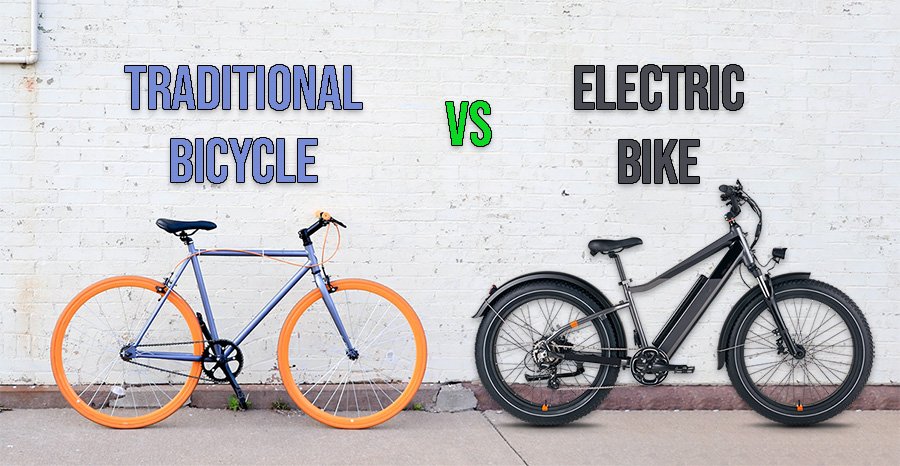
At first glance, an e-bike might seem like its traditional counterpart with an added battery and motor. And while it’s true that many of the fundamental components remain the same—like the frame, tires, and gears—the introduction of electrical elements brings about a new dimension to maintenance.
Traditional bicycles primarily demand attention to their mechanical parts. This includes tasks like adjusting the brakes, lubricating the chain, and ensuring the tires are properly inflated. While these tasks remain relevant for e-bikes, there’s an added layer of complexity due to their electrical components.
The heart of an e-bike—the battery and motor—requires special care. Batteries, for instance, have specific charging and storage guidelines to maximize their lifespan. Motors, on the other hand, may need periodic checks to ensure they’re functioning efficiently.
Additionally, the increased weight of e-bikes can lead to faster wear and tear on the brakes and tires. This means that these parts might need more frequent checks or replacements compared to traditional bikes.
In essence, while there’s a foundational overlap in the maintenance of e-bikes and traditional bicycles, e-bikes come with their unique set of requirements. Recognizing and addressing these nuances is crucial for ensuring the longevity and optimal performance of your electric ride.
Servicing Frequency

While there isn’t a one-size-fits-all answer, there are general guidelines that can help you determine the ideal servicing schedule for your electric steed.
- Routine Checks (Every Ride): Before you set out on any journey, it’s wise to perform a quick visual inspection. Check the tire pressure, ensure the brakes are responsive, and glance over the frame for any visible damage. It’s also a good practice to ensure your battery has sufficient charge for your intended route.
- Monthly Maintenance: Once a month, give your e-bike a more thorough examination. Clean the chain and apply lubricant, inspect the brake pads for wear, and check the tightness of nuts and bolts. For those who ride their e-bikes daily, especially in challenging terrains or weather conditions, this monthly check can be crucial in spotting potential issues before they escalate.
- Quarterly Servicing: Every three to four months, consider a more in-depth maintenance session. This might involve checking the wheel alignment, inspecting the drivetrain, and ensuring the electrical components, including the motor and battery connections, are clean and secure.
- Annual Professional Service: At least once a year, it’s advisable to take your e-bike to a professional for a comprehensive service. They’ll be equipped to handle tasks like checking the motor’s performance, updating any software, and ensuring the battery is functioning optimally. This annual check-up can be likened to a medical physical; it’s an opportunity to catch and address any underlying issues, ensuring your e-bike remains in top shape for the year ahead.
Remember, these are general guidelines. The exact frequency of maintenance can vary based on your riding habits, the e-bike’s model, and the conditions in which you ride.
For instance, an e-bike exposed to frequent rain or off-road terrains might require more frequent care compared to one used occasionally on city roads.
DIY Maintenance vs. Professional Service
Navigating the world of electric bike maintenance can sometimes feel like a balancing act between DIY efforts and seeking professional help. Both approaches have their merits, but understanding when to use each can make all the difference in your e-bike’s performance and longevity.
DIY Maintenance: For the hands-on e-bike owner, regular DIY maintenance can be both rewarding and cost-effective.
Simple tasks like cleaning the bike, lubricating the chain, checking tire pressure, and ensuring the brakes are responsive can easily be done at home. Not only does this give you a sense of connection with your e-bike, but it also allows you to spot potential issues early on.
Professional Service: While DIY maintenance covers the basics, there are times when a professional touch is indispensable.
Complex tasks such as software updates, battery health checks, motor inspections, and wheel alignments require specialized tools and expertise. Professionals can also provide valuable insights into the overall health of your e-bike, recommending replacements or upgrades that might enhance its performance.
Expert Advice: Think of e-bike maintenance as you would car maintenance. While regular cleaning and basic checks can be done at home, periodic visits to a professional ensure that every component, especially the intricate electrical ones, is functioning at its best. Embrace a hybrid approach: stay consistent with your DIY checks, but don’t hesitate to seek professional service when the situation demands.
Battery Care: The Heart of Your E-Bike
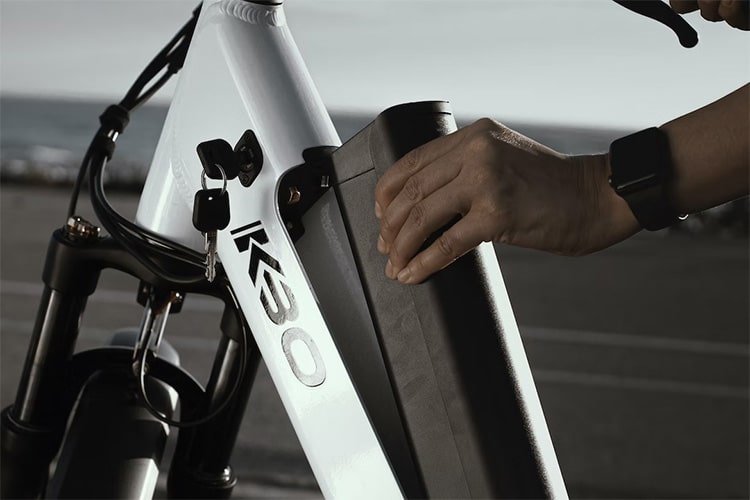
The battery is undeniably one of the most vital components of an e-bike. It powers your rides, giving you that extra boost when you need it, and ensuring you can cover longer distances with ease.
Just as the heart pumps life-giving blood throughout our bodies, the battery breathes life into every part of the e-bike. Thus, its care and maintenance are paramount.
Charging Habits
- Optimal Charging: Avoid draining your battery completely before recharging. It’s best to recharge when it drops to around 20%. This habit can significantly extend the battery’s lifespan.
- Avoid Overcharging: While many modern e-bike batteries are designed to prevent overcharging, it’s still a good practice to unplug once fully charged.
Storage and Temperature
- Ideal Conditions: Batteries perform best when stored in cool, dry places. Extreme temperatures, both hot and cold, can degrade battery health. If you’re storing your e-bike for an extended period, ensure the battery is around 60-80% charged.
- Avoid Moisture: While many e-bike batteries are water-resistant, they aren’t waterproof. Always store in a dry environment and avoid exposing the battery to prolonged moisture.
Regular Inspection
- Connection Points: Ensure that the battery’s connection points are clean and free from debris. A simple wipe-down can ensure efficient energy transfer.
- Physical Damage: Check for any visible signs of damage or wear. If the battery casing is cracked or bulging, it might be time for a replacement.
Longevity and Replacement
- Cycle Life: Every battery has a specific number of charge cycles before its efficiency starts to wane. Familiarize yourself with your e-bike battery’s cycle life to anticipate when a replacement might be due.
- Recycling: When it’s time to replace your battery, ensure you dispose of the old one responsibly. Many retailers offer recycling programs, ensuring that the battery components are handled in an eco-friendly manner.
Motor Maintenance: The Silent Force Behind E-Bikes
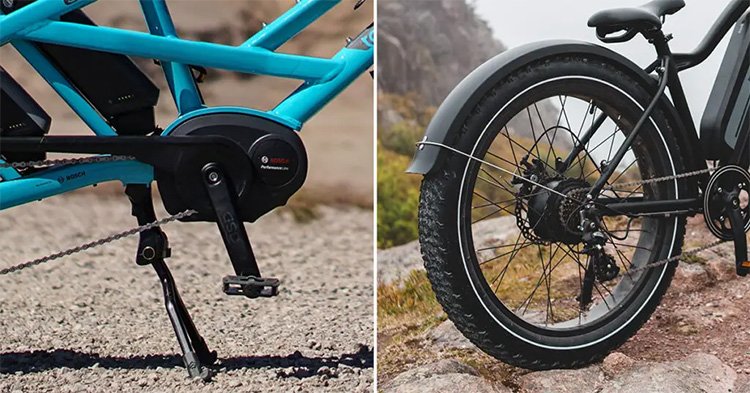
While e-bike motors are designed for durability and require minimal intervention, some maintenance practices can ensure they operate at peak efficiency.
Understand Your Motor Type
- Hub Motors: They’re generally low-maintenance, but it’s essential to periodically check for loose spokes or alignment issues due to the motor’s weight.
- Mid-Drive Motors: They offer better balance and efficiency but require regular checks to ensure the chain and gears are in sync and free from excessive wear.
Cleaning and Inspection
- Dirt and Debris: After rides, especially off-road or in wet conditions, ensure the motor area is free from dirt and debris. A gentle wipe-down can prevent grit from entering the motor.
- Listen for Noises: Unusual sounds, like grinding or whirring, can indicate internal issues. If you notice any such noises, it might be time for a professional inspection.
Software Updates
- Stay Updated: Some e-bike motors come with software that can be updated to improve performance or fix bugs. Regularly check with your e-bike manufacturer or dealer for any available updates.
- Error Codes: Modern e-bike motors may display error codes if there’s a malfunction. Familiarize yourself with common codes or keep a reference guide handy to diagnose issues quickly.
Avoiding Strain
- Gear Shifting: For mid-drive motors, shifting gears smoothly and avoiding sudden changes can reduce strain on the motor.
- Starting Assistance: When starting from a standstill, especially on inclines, pedal a bit before engaging the motor. This practice can reduce the sudden load on the motor.
Drivetrain Maintenance: Keeping the E-Bike’s Powerhouse in Top Shape
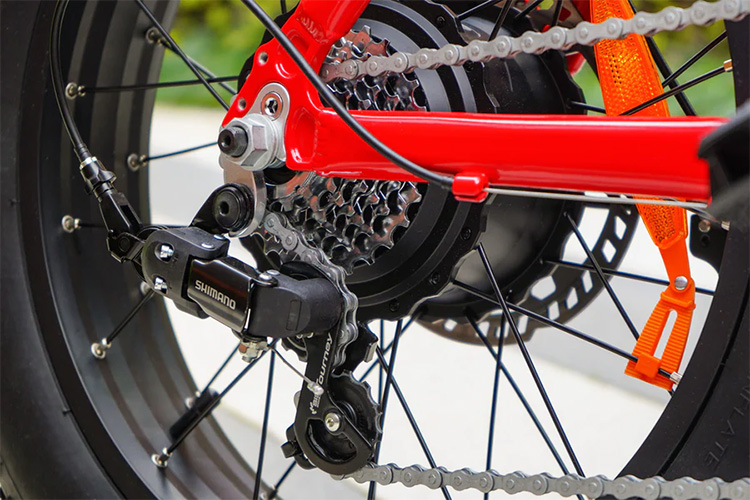
The drivetrain is the heart of your e-bike’s mechanical system, transferring power from the pedals to the wheels. It encompasses the chain, gears, derailleurs, and crankset.
Given its pivotal role, ensuring its optimal condition is crucial for a smooth and efficient ride.
Chain Care
- Regular Cleaning: Dirt and grime can accumulate on the chain, causing wear and reducing efficiency. Use a chain cleaning tool or a simple brush to remove debris, and then apply a suitable lubricant.
- Lubrication: Depending on your riding conditions, choose the right lubricant. Wet conditions require a thicker, water-resistant lube, while dry conditions are best suited for a lighter, dry lube.
- Replacement: Over time, chains stretch and wear out. Using a chain wear indicator tool can help you determine when it’s time for a replacement.
Gears and Derailleurs
- Regular Inspection: Check for bent or damaged teeth on the gears. Ensure the derailleurs move smoothly without sticking or jumping.
- Proper Shifting: Avoid cross-chaining (using the largest front gear with the largest rear gear, or vice versa). This can cause strain and premature wear.
- Cleaning: Gears can accumulate grime, especially in wet or muddy conditions. Clean them regularly to ensure smooth shifting.
Related: E-Bike Gearing Systems Explained
Belt Drive Systems (for e-bikes with this feature)
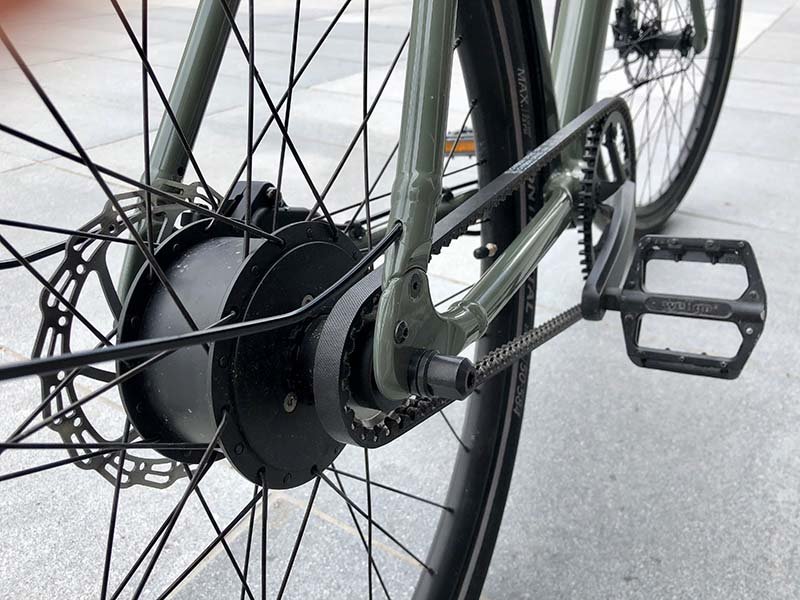
- Tension Check: Ensure the belt has the right tension. Too loose, and it might slip; too tight, and it can cause strain on other components.
- Cleaning: Unlike chains, belts don’t need lubrication. However, they should be kept clean from dirt and debris for optimal performance.
- Alignment: Ensure the belt runs straight and doesn’t rub against any parts of the bike.
Bottom Bracket and Crankset
- Tightness: Ensure the crank arms are tight and secure. A wobbly crank can lead to inefficiencies and potential damage.
- Noise Inspection: Creaks or grinding sounds from the bottom bracket area can indicate wear or a need for lubrication.
Tire Maintenance for E-Bikes

E-bike tires bear the brunt of the journey, carrying not just the rider but also the added weight of the battery and motor.
This makes their maintenance even more critical than that of traditional bicycles. Ensuring they’re in top condition can make your rides smoother, safer, and more enjoyable.
Regular Pressure Checks
- Optimal Inflation: Maintaining the right tire pressure ensures better traction, reduces the risk of punctures, and offers a more comfortable ride. Check the sidewall of your tire for the recommended pressure range and use a reliable gauge for accuracy.
- Effects of Weight: Due to the added weight of e-bikes, tires might require more frequent inflation. Regular checks, especially before longer rides, can prevent undue wear and tear.
Inspecting for Wear and Damage
- Tread Depth: Over time, the tread on your tires will wear down. Regularly inspect for areas that seem bald or have reduced depth, indicating a need for replacement.
- Sidewall Checks: Look for cracks, bulges, or any signs of damage on the tire sidewalls. These can compromise the tire’s integrity and safety.
Puncture Prevention and Repair
- Puncture-Resistant Tires: Consider investing in tires designed for puncture resistance, especially if you frequently ride on rough or debris-filled terrains.
- Sealants: Tubeless tires can benefit from sealants that automatically seal small punctures, reducing the risk of flats.
- Carry a Kit: Always have a basic repair kit on hand. This should include tire levers, patches, a spare tube, and a mini pump or CO2 inflator.
Brake Care Essentials for E-Bikes
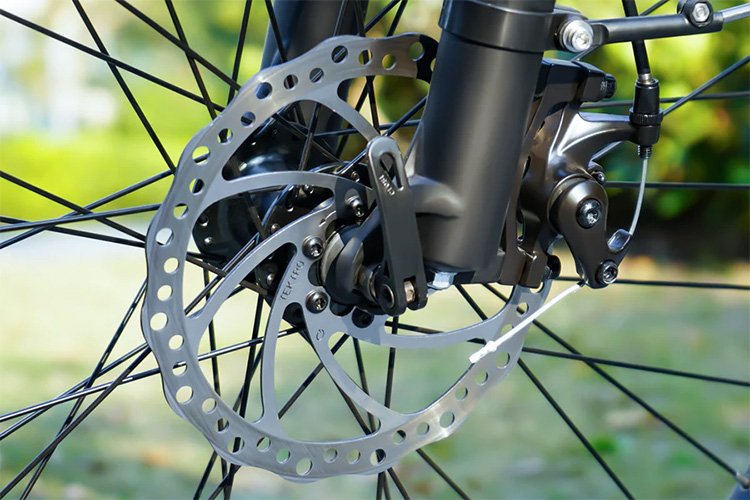
Brakes ensure safety by providing reliable stopping power when needed. Given the increased speeds and weights of e-bikes, their brakes are subjected to more strain, making their maintenance paramount for a safe ride.
Regular Brake Checks
- Responsiveness: Before every ride, test your brakes for responsiveness. They should engage smoothly without any sticking or squeaking.
- Brake Lever: The lever shouldn’t come too close to the handlebar when fully pressed. If it does, it might indicate worn-out brake pads or a need for adjustment.
Brake Pad Inspection and Replacement
- Wear Indicators: Regularly inspect the thickness of your brake pads. If they’re worn down to the indicator line or have less than 3mm of material left, it’s time for a replacement.
- Even Wear: Ensure that the pads wear evenly. Uneven wear can indicate alignment issues and reduce braking efficiency.
Brake Rotor Maintenance
- Cleaning: Over time, brake rotors can accumulate dirt, oil, and other contaminants. Use a specific brake cleaner to keep them clean and free from residues.
- Alignment: Ensure the rotors are straight. Warped rotors can cause uneven wear and reduce braking efficiency.
Hydraulic Brake Care
- Fluid Levels: For e-bikes with hydraulic brakes, regularly check the fluid levels. Low levels can indicate a leak or the need for a system bleed.
- Bleeding: Air bubbles in the system can reduce brake responsiveness. Periodic bleeding ensures optimal brake performance.
Adjustments and Calibrations
- Brake Calipers: Ensure they’re aligned correctly with the rotors. Misalignment can cause noise, reduced braking power, and premature wear.
- Cable Tension: For mechanical brakes, ensure the cables are taut and free from fraying or damage.
Cleaning Your E-Bike: Safe and Effective Methods

Riding an e-bike exposes it to dirt, mud, and various environmental elements. While a little dirt might give your e-bike a rugged charm, regular cleaning is essential to keep it looking fresh and functioning optimally.
However, given the electronic components, cleaning an e-bike requires a bit more care than a traditional bicycle.
Preparing Your E-Bike for Cleaning
- Turn Off: Ensure your e-bike is turned off to prevent any electrical mishaps.
- Battery Removal: Before starting, always remove the battery. This ensures it stays dry and safe from any cleaning agents.
Gentle Cleaning Approach
- Avoid High-Pressure: While pressure washers are effective, they can force water into electrical components. Instead, use a gentle spray or a bucket of water.
- Soft Brushes: Use soft brushes to scrub away dirt and grime. They’re effective without being abrasive on the bike’s finish.
Cleaning Agents
- E-Bike Specific Cleaners: There are cleaning products designed specifically for e-bikes that are gentle on the frame and safe for electrical components.
- Avoid Harsh Chemicals: Steer clear of aggressive solvents or degreasers that might damage the paint or harm the electrical parts.
Drying Your E-Bike
- Natural Air Dry: After rinsing, allow your e-bike to air dry. This prevents water spots and ensures no moisture remains in crevices.
- Soft Cloth: Use a soft cloth to wipe down the frame and components, ensuring they’re thoroughly dry.
Post-Cleaning Checks
- Reconnect Battery: Once the e-bike is dry, reinstall the battery and ensure all connections are secure.
- Lubrication: After cleaning, it’s a good time to lubricate the chain and other moving parts to ensure smooth operation.
Regular cleaning not only enhances the aesthetics of your e-bike but also allows you to inspect it for any wear or damage.
By adopting safe and effective cleaning methods, you ensure the longevity of both the mechanical and electrical components, ensuring your e-bike remains a reliable companion for years to come.
Community and Forum Recommendations
The world of e-biking is vast and ever-evolving. While expert advice and articles provide a solid foundation, there’s immense value in tapping into the collective wisdom of the e-bike community.
Forums and online communities are treasure troves of real-world experiences, hacks, and recommendations from fellow e-bike enthusiasts. Whether you’re troubleshooting a specific issue, seeking recommendations for upgrades, or simply wanting to share your latest e-bike adventure, these platforms can be invaluable.
Below, I’ve highlighted a couple of reputable e-bike forums and communities that come highly recommended by riders around the globe. Dive in and become a part of the vibrant e-bike conversation!
- https://forums.electricbikereview.com/forum/maintenance/
- https://www.reddit.com/r/ebikes/comments/14kq10o/ebike_maintenance/
Final Words
One thing becomes abundantly clear: consistent care is an investment, not just an obligation.
Much like nurturing a relationship or tending to a garden, the time and effort you invest in your e-bike today will yield dividends in the form of performance, longevity, and safety in the days to come.
Regular maintenance ensures that every ride is as exhilarating as the first, with your e-bike responding seamlessly to your commands. It safeguards against unexpected breakdowns, ensuring that your journeys, whether they’re daily commutes or weekend adventures, are uninterrupted and enjoyable.
By dedicating a little time and attention now, you ensure that your electric companion remains a reliable, efficient, and joyful part of your life for years to come.

The founder and the editor-in-chief of the Electric Wheelers blog. With a previous background in IT, sales, and video editing, he has now established himself as a micromobility expert.
He bought his first e-scooter over 5 years ago and since then has owned dozens of e-scooters and e-bikes. His deep understanding of the technical aspects, coupled with a keen eye for market trends, enables him to provide insightful and reliable content.
His commitment to promoting sustainable and efficient urban mobility solutions has made him a respected voice in the community of eco-friendly transportation enthusiasts.

